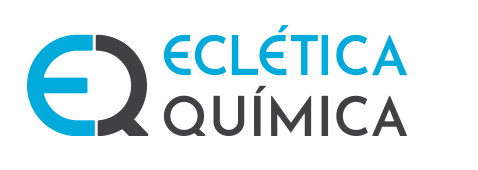Abstract
The species Harpagophytum procumbens DC. is popularly known as devil’s claw and is widely used because of its anti-inflammatory properties that are attributed to an iridoid glycoside, the harpagoside. This medicinal plant is part of the Brazilian List of Essential Medicines, that is, it was selected and standardized for the resolution of diseases in the Brazilian public health system, SUS, and can be found in several brands. Due to the importance of quality monitoring, the objective of this study was to create and validate a method for identification and quantification of harpagoside in tablets of the devil’s claw, as well as to evaluate the content of this iridoid glycoside in three commercially available brands in Brasília, DF, Brazil. The evaluated parameters in the validation by high performance liquid chromatography (HPLC) were linearity, limits of detection and quantification, precision, selectivity, accuracy and robustness, as required by the Brazilian regulation. The developed and validated method proved satisfactory for the quality control of commercial products that present in this composition the medicinal plant. All the devil’s claw brands presented divergences regarding the quality that can interfere with therapeutics and with safety and efficacy.
References
Terra-Junior, O. N., Maldonado, J. V., Arnobio, A., Estudo do desempenho comercial dos insumos farmacêuticos vegetais sob a ótica do Comércio Exterior, Revista Fitos 9 (3) (2015) 233-246. https://www.arca.fiocruz.br/handle/icict/19237.
Brasil, Ministério da Saúde. Política Nacional de Plantas Medicinais e Fitoterápicos, Brasília: Ministério da Saúde (2006). http://bvsms.saude.gov.br/bvs/publicacoes/politica_nacional_fitoterapicos.pdf.
Moura, M. G., Lopes, L. C., Biavatti, M. W., Busse, J. W., Wang, L., Kennedy, S. A., Bhatnaga, N., Bergamaschi, C. C., Brazilian oral herbal medication of osteoarthritis: a systematic review protocol, Systematic Reviews 5 (86) (2016) 1-7. https://doi.org/10.1186/s13643-016-0261-1.
Tropicos. Missouri Botanical Garden, Harpagophytum procumbens, Tropicos (2017). http://www.tropicos.org/Name/24300038.
Grant, L., McBean, D. E., Fyfe, L., Warnock, A. M., A review of the biological and potencial therapeutic actions of Harpagophytum procumbens, Phytotherapy Research 21 (3) (2007) 199-209. https://doi.org/10.1002/ptr.2029.
Mncwangi, N., Chen, W., Vermaak, I., Viljoen, A. M., Gericke, N., Devil’s Claw - A review of the ethnobotany, phytochemistry and biological activity of Harpagophytum procumbens, Journal of Ethnopharmacology 143 (3) (2012) 755-771. https://doi.org/10.1016/j.jep.2012.08.013.
Georgiev, M. I., Ivanovska, N., Alipieva, K., Dimitrova, P., Verpoorte, R., Harpagoside: from Kalahari Desert to pharmacy shelf, Phytochemistry 92 (2013) 8-15. https://doi.org/10.1016/j.phytochem.2013.04.009.
Oliveira, E. M. A., Maywald, P. G., Rosa, G. A. A., Distribuição de plantas medicinais e fitoterápicos através do SUS, E-RAC 3 (1) (2013) 3-19. http://www.computacao.unitri.edu.br/erac/index.php/e-rac/article/view/141.
Souza-Moreira, T. M., Salgado, H. R. N., Pietro, R. C. L. R., O Brasil no contexto de controle de qualidade e plantas medicinais, Revista Brasileira de Farmacognosia 20 (3) (2008) 435-440. https://doi.org/10.1590/S0102-695X2010000300023.
Tistaert, C., Dejaegher, B., Heyden, Y. V., Chromatographic separation techniques and data handling methods for herbal fingerprints: A review, Analytica Chimica Acta 690 (2) (2011) 148-161. https://doi.org/10.1016/j.aca.2011.02.023.
Veiga Junior, V. F., Mello, J. C. P., As monografias sobre plantas medicinais, Revista Brasileira de Farmacognosia 18 (3) (2008) 464-471. https://doi.org/10.1590/S0102-695X2008000300022.
Brasil, Agência Nacional de Vigilância Sanitária, Farmacopeia Brasileira, Brasília: Agência Nacional de Vigilância Sanitária 5 (Suppl. 2) (2017) 1-1016. http://portal.anvisa.gov.br/documents/33832/259143/Segundo+Suplemento+FB+5/9cfb1239-875c-4a77-8741-b59416684d29.
Brasil, Agência Nacional de Vigilância Sanitária, Instrução normativa nº 4, de 18 de junho de 2014, Determina a publicação do Guia de orientação para registro de medicamento fitoterápico e registro e notificação de produto tradicional fitoterápico, Diário Oficial da União (2014). http://portal.anvisa.gov.br/documents/33836/2501251/Guia%2Bfinal%2Bdicol%2B180614+%282%29.pdf/f400c535-e803-4911-9ef8-100c0c2bb3c6.
Nalluri, B. N., Kumar, S., Characterization and estimation of harpagoside in dried root extract and oral powder formulations of Harpagophytum procumbens by validated RP-HPLC-PDA Method, Journal of Drug Delivery and Therapeutics 9 (2) (2019) 38-46. http://jddtonline.info/index.php/jddt/article/view/2459/1788.
Avato, P., Argentieri, M. P., Quality Assessment of Comercial Spagyric Tinctures of Harpagophytum procumbens and Their antioxidant properties, Molecules, 24 (12) (2019) 2-15. https://doi.org/10.3390/molecules24122251.
Leite, C. F. M., Leite, B. H. M., Barros, I. M. C., Gomes, S. M., Fagg, C. W., Simeoni, L. A., Silveira, D., Fonseca, Y. M., Determination of rutin in Erythroxylum suberosum extract by liquid chromatography: applicability instandardization of herbs and stability studies, Boletín Latinoamericano y del Caribe de Plantas Medicinales y Aromáticas 13 (2) (2014) 135-143.
Brasil, Agência Nacional de Vigilância Sanitária. Resolução da Diretoria Colegiada nº 166, de 24 de julho de 2017, Dispõe sobre a validação de métodos analíticos e dá outras providências, Diário Oficial da União (2017). http://www.in.gov.br/materia/-/asset_publisher/Kujrw0TZC2Mb/content/id/19194581/do1-2017-07-25-resolucao-rdc-n-166-de-24-de-julho-de-2017-19194412.
European Medicines Agency. ICH Topic Q2B; Note for guidelines on Validation of Analytical Procedures: Text and Methodology, European Medicines Agency (1995). https://www.ema.europa.eu/en/documents/scientific-guideline/ich-q-2-r1-validation-analytical-procedures-text-methodology-step-5_en.pdf.
Bettega, P. V. C., Czlusniak, G. R., Piva, R., Namba, E. L., Ribas, C. R., Grégio, A. M. T., Rosa, E. A. R., Fitoterapia: dos canteiros ao balcão da farmácia, Archives of Oral Research 7 (1) (2011) 89-97. https://periodicos.pucpr.br/index.php/oralresearch/article/view/23149/22243.
Vlachojannis, J., Roufogalis, B. D., Chrubasik, S., Systematic review on the safety of Harpagophytum preparations for osteoarthritic and low back pain, Phytotherapy Research 22 (2) (2008) 149-152. https://doi.org/10.1002/ptr.2314.

This work is licensed under a Creative Commons Attribution 4.0 International License.
Copyright (c) 2020 Eclética Química Journal








